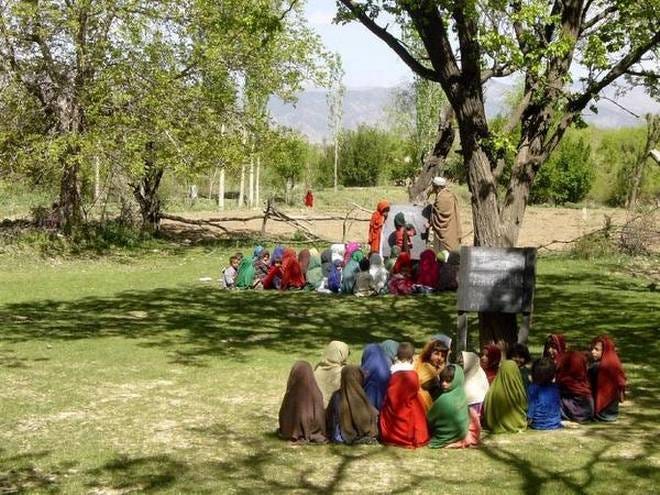Co-authored by: By Manas Fuloria, Founder and Trustee, Plaksha and Co-founder and CEO, Nagarro | Mohit Thukral, Founder and Trustee, Plaksha and Founder, Vivtera | Vineet Gupta, Founder and Trustee, Plaksha and MD, Jamboree Education

With the use of technology, learning is likely to become more personalised. In our current way of learning, there is only so much individual attention a teacher can give each student. Technology can bridge this divide; it can help scale and provide more equitable access to personalised learning. The classroom is not about the room itself. Rabindranath Tagore, who founded Shantiniketan, held classes in the open under the trees. So, when we say “conventional classroom”, we must tear our thoughts away from four walls and a ceiling and focus on the face-to-face interaction between the educator and student.
“A great teacher is like a good coach, like Rahul Dravid, for example”, says Professor Sanjay Sarma, who leads open learning at the Massachusetts Institute of Technology, and is the co-author of an upcoming book, Grasp: The Science That is Transforming How We Learn. “The best teachers fire the curiosity of the students and help them contextualise their learnings. And this is still best-done face-to-face.”
A primitive, yet prevalent, notion of teaching is that the teacher conveys information to the student who receives and memorises. We have all attended many such classes. A large part of teaching today continues in this format. But this concept is outdated. Today, great content, in the form of lectures from the best faculty, is available on demand on the Internet for free. So delivering content for memorising cannot be the best use of a teacher’s time. On the other hand, a truly great teacher will help a student digest the information, engage in discussion and debate, encourage critical thinking, connect the dots to show how different elements fit (or don’t fit) together and make the classroom lively. Online learning is still struggling to catch up on this dimension.
Personalisation is key
A great teacher will also customise and adapt his/her teaching to explore what can be done in each student’s particular context. With the use of technology, learning is likely to become more personalised. In our current way of learning, there is only so much individual attention a teacher can give each student. Technology can bridge this divide; it can help scale and provide more equitable access to personalised learning.
Another critical element that teachers bring in is of inspiration and motivation, or “firing curiosity” as Professor Sarma puts it. Being inspired by a great teacher is very powerful; it is the passing of a baton from one generation to another, with the next generation expected to do even more with it. What exactly is inspiration? At one level, it is being awe of the person and his/her accomplishments. At another level, it is starting to share the person’s view of the topic or subject and perhaps some individual characteristics as well. Some of this inspiration can definitely be transmitted through online video, but face-to-face inspiration would be difficult to beat.
But there is more to universities than interactions with the faculty. A big part of university education is the campus experience, a social connect that helps individuals grow: the independence, the bonding with friends, the crushes and heartaches, the learning and inspiration from peers. Long after we forget the subjects we studied, we treasure the memories of our friends and what we learned from them. The best universities will emphasise this aspect. They will blur the lines between the classroom and the rest of the campus, and create spaces for informal and ad-hoc discussions.
No current immersive technology can yet fully replace a well-designed, immersive campus experience. That said, COVID-19 will definitely force universities to up their game. It is quite true that while classroom learning is great in theory, it is often sub-optimal in practice. Most teaching does not exploit the latest scientific understanding of human learning. Teaching formats also need refreshing. Lectures are much too long for our short attention spans. In contrast, many popular channels on YouTube have short and engaging videos that explain a complicated concept in under 10 minutes. The true challenge to the classroom is not from the online broadcasting of lectures but from these new innovative formats. Thus, while universities and classrooms may continue after the pandemic, there will be changes in how teachers teach and how students learn.
Edited version of the article first published in The Hindu, on September 16, 2020.



